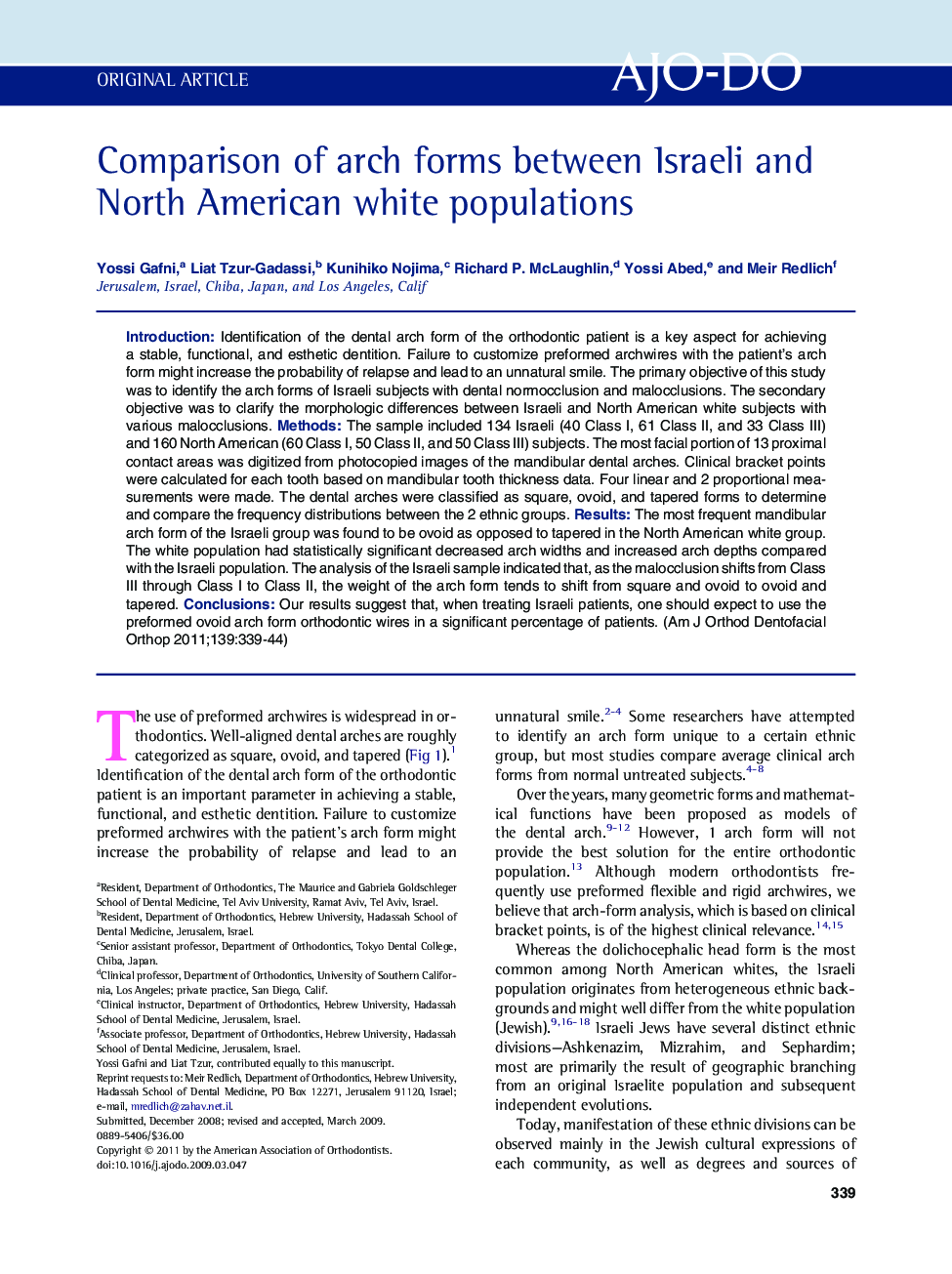| Article ID | Journal | Published Year | Pages | File Type |
|---|---|---|---|---|
| 3117124 | American Journal of Orthodontics and Dentofacial Orthopedics | 2011 | 6 Pages |
IntroductionIdentification of the dental arch form of the orthodontic patient is a key aspect for achieving a stable, functional, and esthetic dentition. Failure to customize preformed archwires with the patient’s arch form might increase the probability of relapse and lead to an unnatural smile. The primary objective of this study was to identify the arch forms of Israeli subjects with dental normocclusion and malocclusions. The secondary objective was to clarify the morphologic differences between Israeli and North American white subjects with various malocclusions.MethodsThe sample included 134 Israeli (40 Class I, 61 Class II, and 33 Class III) and 160 North American (60 Class I, 50 Class II, and 50 Class III) subjects. The most facial portion of 13 proximal contact areas was digitized from photocopied images of the mandibular dental arches. Clinical bracket points were calculated for each tooth based on mandibular tooth thickness data. Four linear and 2 proportional measurements were made. The dental arches were classified as square, ovoid, and tapered forms to determine and compare the frequency distributions between the 2 ethnic groups.ResultsThe most frequent mandibular arch form of the Israeli group was found to be ovoid as opposed to tapered in the North American white group. The white population had statistically significant decreased arch widths and increased arch depths compared with the Israeli population. The analysis of the Israeli sample indicated that, as the malocclusion shifts from Class III through Class I to Class II, the weight of the arch form tends to shift from square and ovoid to ovoid and tapered.ConclusionsOur results suggest that, when treating Israeli patients, one should expect to use the preformed ovoid arch form orthodontic wires in a significant percentage of patients.
